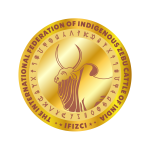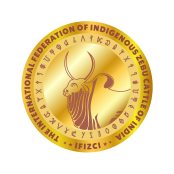This article covers the management, physical characteristics, history, and uses of Zebu cattle. Zebu cattle, officially named Bos taurus or Bos indicus, are a different breed that are distinguished by their prominent shoulder hump crowns, protruding ears, and prominent dewlaps. Zebu cattle originally developed in South Asia and have since become widely dispersed as a result of their adaptability to a variety of climates and their application in agriculture.
History and Origin
Zebu cattle are descended from three Indian cattle breeds and are native to Southwest Asia. Their progeny are not humped. The Guzerat, Nelore, and Gir possessed the most sway on Zebu reproduction. The Bos primigenius species of cattle includes humped zebu cattle.
They were brought to Africa at an early age, and somewhat recently, Brazil and the US have bought them. hello are accepted to have started in the Indian subcontinent, where they were trained something like quite a while back. Their name, “Zebu,” comes from the Tibetan word “zeba,” signifying “bump.”
Since the beginning of time, Zebu steers have been respected in different societies, especially in India, where they hold strict and social importance. After some time, these cows spread to different districts, including Africa, Southeast Asia, and South America, through exchange and colonization.
Physical Characteristics of Zebu
Age at puberty
The age at puberty in Zebu cattle (Bos taurus indicus) can vary based on several factors, including breed, nutritional status, management practices, and environmental conditions. Generally, Zebu cattle reach puberty later than their Bos taurus counterparts (such as European breeds). Puberty in Zebu cattle can be delayed for genetic and environmental reasons, and can be reflected in the age at which they first calve, which can be 40 months or older.
The age at which Zebu cattle reach puberty can vary depending on the breed and sex of the animal:
Miniature Zebu cows: Can be ready for breeding as early as 2 years old, but can take up to 6 years
Miniature Zebu bulls: Can be ready for breeding at 18 months, but Zebus aren’t usually fully mature until they’re 3 years old
Brahman bulls: Can reach puberty between 16 and 17 months of age
Nelore bulls: Can reach puberty at 18 months of age
Muturu bulls: Can reach puberty at 11 months of age and be used for breeding at 15 months
Hump
Zebu cattle are easily recognized by their distinctive hump, which is situated above the shoulders. The muscle and fat that make up this hump aid in the cattle’s ability to store energy and withstand adversity.
The distinctive big hump over the shoulders of Zebu cattle is their most noticeable characteristic. Muscle and fat tissue make up the majority of this hump, which has multiple uses:
-
Energy Storage: The cattle can survive in tough conditions by using the fat stored in the hump as a reserve of energy during times of scarcity.
-
Heat Regulation: In hotter areas, the muscle and fat in the hump contribute in the dissipation of heat, keeping the cattle cool.
Dewlap
Zebu cattle have large dewlaps, which are folds of skin hanging from their necks. It is loose fold of skin that hangs from their neck and chest. This feature is beneficial in multiple ways:
-
Thermoregulation: It helps the large surface area of dewlap in heat dissipation, which is important for thermoregulation in tropical climates.
-
Protection: The dewlap’s thick skin can provide some defense against wounds and insect bites.
Ears
The Zebu cattle’s ears are mostly long, pendulous, and drooping. These ears contribute to the cattle’s adaptability in several ways:
-
Heat Dissipation: The large surface area of the ears helps in releasing excess body heat.
-
Insect Deterrence: The movement of the long ears can help deter insects, reducing the risk of bites and infestations.
This feature, along with their long, drooping ears, aids in thermoregulation, helping them stay cool in hot climates.
Size and Color
Zebu cattle come in various sizes and colors, depending on the breed. They can range from small, compact animals to larger, more robust ones. Common coat colors include white, gray, brown, and red.
The size and build of Zebu cattle can vary significantly depending on the breed, but they generally exhibit the following traits:
-
Robust Frame: Zebu cattle have a robust and muscular build, which makes them suitable for draft work and carrying loads.
-
Body Size: They range from medium to large-sized animals. For instance, the Brahman breed can weigh between 1,000 to 2,200 pounds (450 to 1,000 kilograms).
Breeds of Zebu
Zebu steers, or Bos taurus indicus, are a subspecies of homegrown dairy cattle beginning from South Asia. They are very much adjusted to heat and humidities and are known for their unmistakable bumped backs, huge dewlaps, and pendulous ears. Zebu breeds are different and have been specifically reproduced for different characteristics like milk creation, meat quality, and draft power. There are various types of Zebu steers, each with its special attributes and transformations. Probably the most remarkable varieties include:
Brahman
Originating from India, Brahman cattle are one of the most well-known Zebu breeds. They are highly resilient to heat and disease, making them popular in the United States and other parts of the world.
Characteristics: Brahman cattle are known for their large hump over the shoulders, loose skin, and drooping ears. They are typically gray or red and are highly resistant to heat and disease.
Uses: Primarily used for beef production. They are also crossed with other breeds to improve hardiness and adaptability.
Gir
The Gir breed, also from India, is known for its milk production. These cattle have a distinct appearance with their red and white coats and curved horns.
Characteristics: Gir cattle have a distinctive appearance with their convex forehead, pendulous ears, and red-and-white spotted coat. They are known for their gentle temperament and resilience.
Uses: Renowned for their high-quality milk production. They are also used in crossbreeding programs to improve dairy traits.
Nelore
The Nelore breed is primarily found in Brazil and is renowned for its beef production. They are large, white cattle with short coats, which help them thrive in tropical climates.
Characteristics: Nelore cattle have a white coat with short, fine hair and a prominent hump. They are large, hardy, and have excellent adaptability to tropical climates.
Uses: Predominantly used for beef production. They are the most popular beef cattle breed in Brazil due to their productivity and resilience.
Sahiwal
-
Origin: Punjab, India, and Pakistan
-
Characteristics: Sahiwal cattle are medium-sized with a reddish-brown coat and loose skin. They are known for their resistance to heat and parasites.
-
Uses: Dual-purpose breed used for both milk and beef production. They are one of the best dairy breeds in tropical countries.
Red Sindhi
-
Origin: Sindh, Pakistan
-
Characteristics: Red Sindhi cattle have a deep red or reddish-brown coat. They are hardy and well-suited to hot climates.
-
Uses: Primarily used for dairy production. They produce high-quality milk and are also used in crossbreeding programs to enhance milk production in other breeds.
Uses of Zebu Cattle
Zebu cattle are incredibly versatile and are used for various purposes, including:
Dairy Production
Many Zebu breeds, such as the Gir and Sahiwal, are excellent milk producers. Their milk is often rich in fat and is used to make a variety of dairy products.
Beef Production
Zebu cattle are also valued for their meat. Breeds like the Brahman and Nelore are specifically bred for beef production, known for their lean and flavorful meat.
Draft Animals
In many parts of the world, Zebu cattle are used as draft animals. Zebu cattle are strong and often used for hauling and riding. Their strength and endurance make them ideal for plowing fields, transporting goods, and other agricultural tasks.
Cultural and Religious Significance
In India and other regions, Zebu cattle hold significant cultural and religious importance. In some regions, Zebu cattle have significant religious meaning. For example, in their homeland of India, Zebu cattle are considered holy by Hinduism and are only used for draft and milk. They are often considered sacred and are used in various ceremonies and rituals.
Food
Zebu cattle are used as dairy cattle, beef cattle, and for meat production. In Brazil and other countries that produce meat, Zebu cattle are often raised for beef because they can cope better with subtropical environments than European breeds.
Disease and parasite resistance
Zebu cattle are resistant to disease and parasites.
Milk and meat production
Zebu cattle are used for milk and beef production. While their milk production isn’t high, it’s mostly consumed by their calves, which are usually small and don’t cause calving difficulties.
Management and Care
Housing
Zebu cattle need adequate shelter to protect them from extreme weather conditions. Housing should provide shade and ventilation to keep them cool in hot climates.
Feeding
Zebu cattle are hardy and can graze on a variety of vegetation. However, providing them with a balanced diet that includes supplements and minerals ensures optimal health and productivity.
Health Care
Regular health check-ups and vaccinations are crucial for preventing diseases. Zebu cattle are generally resistant to many diseases, but proper care and management are essential for maintaining their health.
Breeding
Selective breeding practices can help improve desirable traits in Zebu cattle, such as milk production, meat quality, and disease resistance. Breeding programs should focus on maintaining genetic diversity while enhancing these traits.
Summary
Zebu cattles are wonderful creatures with a rich history and many purposes. Their versatility to different environments and their strength makes them priceless in horticulture and domesticated animals on the board. Grasping their attributes, breeds, and the executive’s practices can assist ranchers and aficionados with capitalizing on these special bumped cows. Whether for milk, meat, draft purposes, or social importance, Zebu cattle keep on assuming a fundamental part in many regions of the planet.


